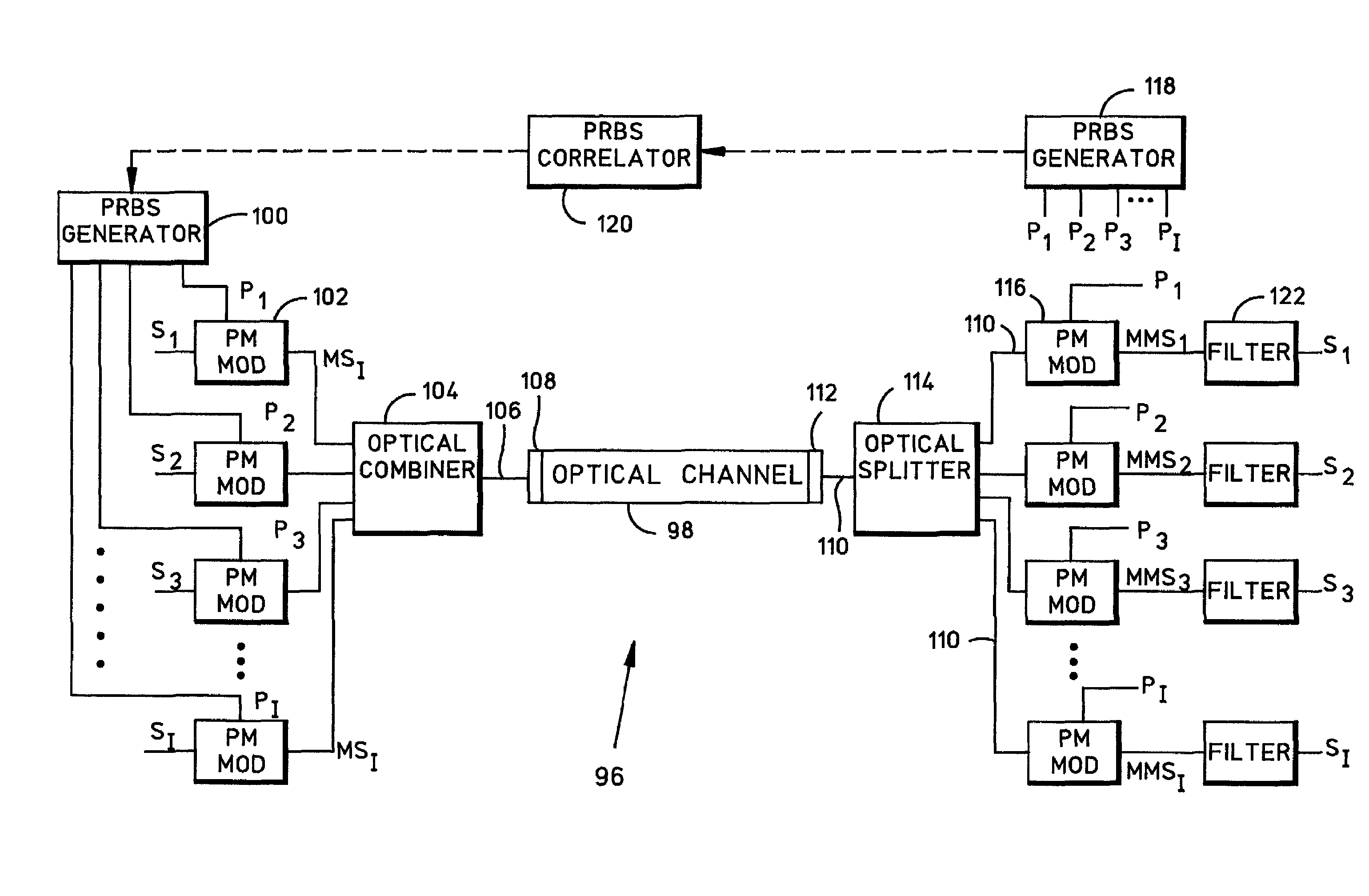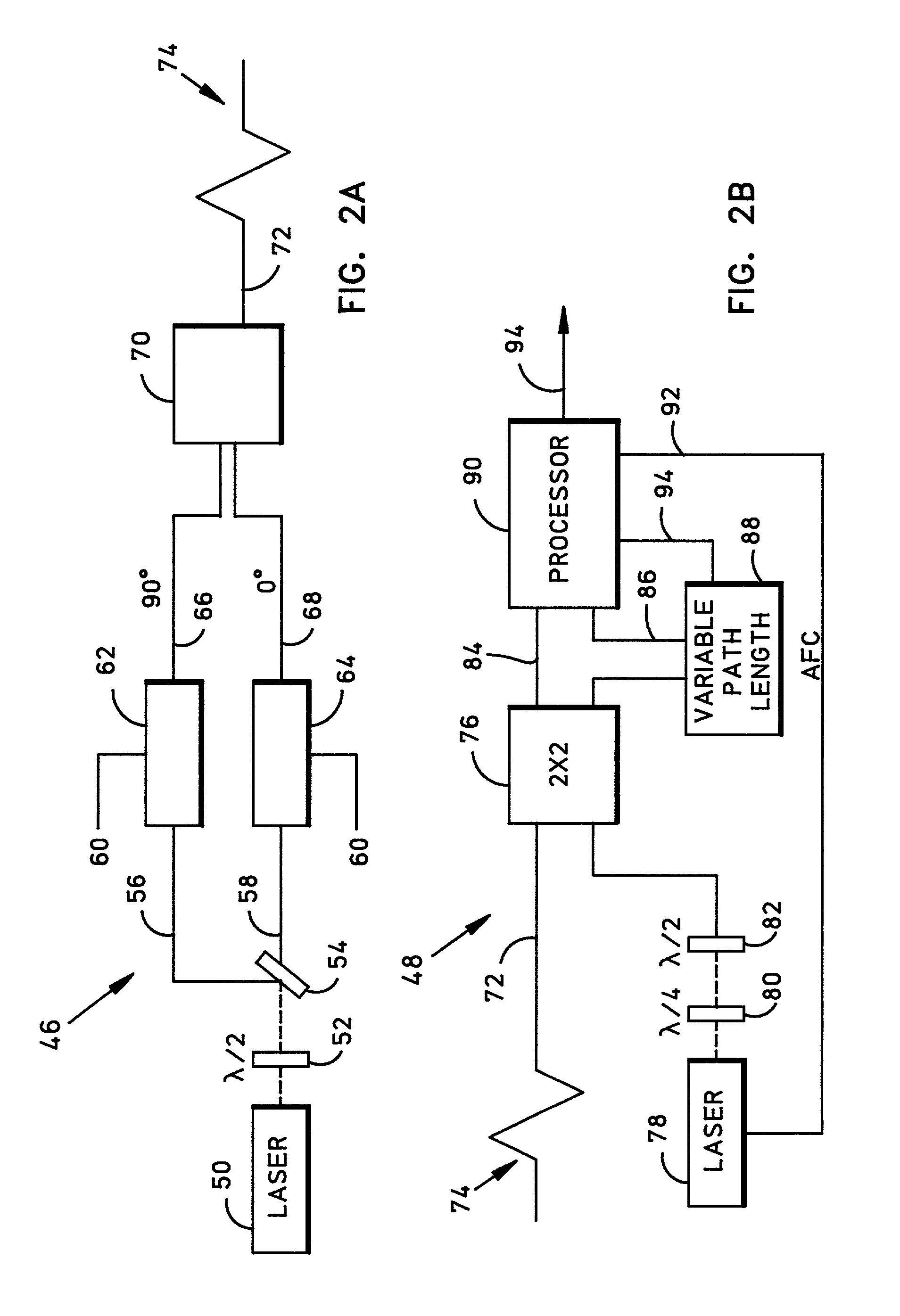Optical signal multiplexer/demultiplexer employing pseudorandom mode modulation
- Summary
- Abstract
- Description
- Claims
- Application Information
AI Technical Summary
Benefits of technology
Problems solved by technology
Method used
Image
Examples
Embodiment Construction
[0021]In a pseudorandom (PRN) coding scheme, the signal energy is spread over some signal parameter, such as phase or frequency, according to one of a set of data sequences that are statistically orthogonal. In the system of this invention, the signal energy is spread in an optical mode, such as polarization, before transmission over a common optical channel. Thus, several independent optical signals may each be spread in mode and combined for transmission over a single channel, as may be appreciated with reference to FIG. 1.
[0022]FIG. 1 is a schematic diagram illustrating the system 10 of this invention for transmitting a plurality (I) of independent optical signals {Si} through a single optical channel. Three independent optical signals S1, S2 and S3, each of which may be amplitude-modulated and of identical frequency and phase, for example, are shown coupled to separate mode modulators, which may include, for example, electro-optical polarizers. The three mutually orthogonal PRN ...
PUM
 Login to View More
Login to View More Abstract
Description
Claims
Application Information
 Login to View More
Login to View More - R&D
- Intellectual Property
- Life Sciences
- Materials
- Tech Scout
- Unparalleled Data Quality
- Higher Quality Content
- 60% Fewer Hallucinations
Browse by: Latest US Patents, China's latest patents, Technical Efficacy Thesaurus, Application Domain, Technology Topic, Popular Technical Reports.
© 2025 PatSnap. All rights reserved.Legal|Privacy policy|Modern Slavery Act Transparency Statement|Sitemap|About US| Contact US: help@patsnap.com



